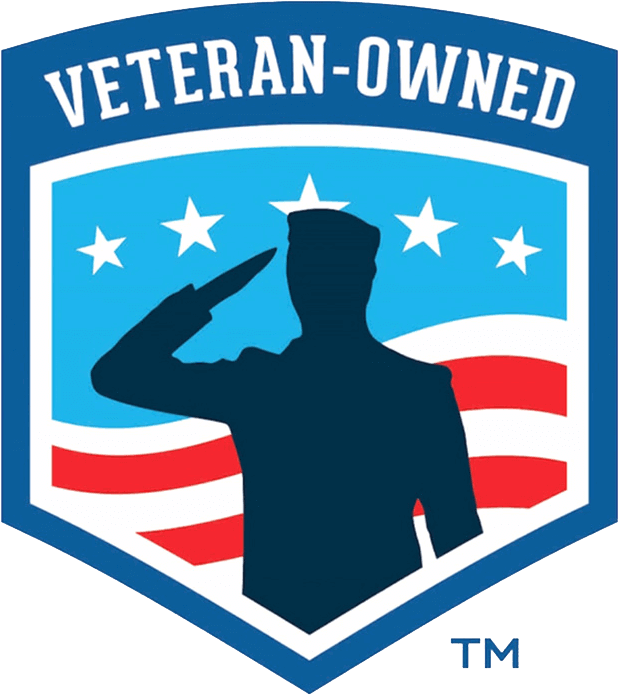You might be thinking about launching a trucking business if you’re passionate about the industry and have an entrepreneurial spirit. However, without a plan, running a business can be difficult.
To attract partners, investors, loans, and staff, you can clarify your company’s objective using a business plan. You will demonstrate to others your commitment to trucking and your desire to advance in the field.
Writing a thorough business plan will help you communicate your company’s objectives more clearly. They will assist you in identifying the distinctive features of your business and how you might achieve success shortly.
A few guidelines should be kept in mind when drafting a business plan so that they can be incorporated into the finished product. These tactics will help you launch and manage your trucking business.
A Trucking Business Plan: What Is It?
An official record of your company’s goals, costs, profits, and other relevant data is called a trucking business plan. In essence, your trucking business plan serves as your roadmap for growing your organization.
A business plan, however, is a dynamic document. To make sure you are continuously pursuing your objectives, your plan should adapt as your company evolves and develops over time.
Why Is A Trucking Business Plan Necessary?
Before you act, you must have a thorough business plan for your trucking company. Similar to a road trip map, a trucking company plan is essential for determining your destination and the best route to get there.
Your entrepreneurial efforts are supported by a trucking business plan, which helps in:
- Selecting the ideal site for business facilities
- Identifying the trucks and equipment you require
- Choosing which licenses and insurance policies to acquire
- Specifying the prerequisites for the driver hiring process
- Finding your starting cash for an investment
- Choosing if it is worthwhile to start this business
What Should A Trucking Business Plan Include?
The information required to manage your firm is contained in your trucking business plan. The following are essential components of a trucking business plan:
Executive Summary: A concise overview of your company’s goals is called an executive summary. It is typically used to provide prospective investors with a synopsis of your firm and encourage them to continue reading your plan.
Detailed Company Description: You can go into great detail about what drives your business in this part. The background of the management team, your prior trucking experiences, and what makes you stand out from the competition are typical subjects discussed here.
Services Offered: Add a section outlining the kind of freight services you offer since trucking companies provide different services.
Market Study: A comprehensive market analysis demonstrates to possible investors your knowledge of the market and your ability to succeed. It also assists you in determining what your rivals excel at and how to set your company apart.
Sales And Marketing Plan: Without a strong sales and marketing plan, even the best-laid business ideas are unlikely to succeed. This covers how you wish to market your company and draw in new customers.
Financial Projections: The amount you require to launch the business and the amount you hope to make are typically included in this part. This aids investors in gauging the profitability of your enterprise and may persuade them to support it.
How To Draft A Trucking Business Plan
After discussing the components of a business plan, it’s time to learn how to create one. The following are essential processes for writing a business plan for a trucking company:
1. Name Your Company
Selecting a suitable name is a crucial but often neglected step in launching a profitable company. Regardless of how good your services are, a name that isn’t appealing will drive away clients.
Think of words that you identify with your company to choose a name. If you want to be sure your ideas align, try working with a group of transportation enthusiasts. You can limit them to your favorite terms, so anything goes at the start.
Typical names for trucking companies include:
- Names of families
- Types of freight
- Names based on location
- plays with words
- A distinctive name that reflects the character of your business
When deciding on a name for your company, you must be aware of its goal. If you would like the name to be carried down through your family’s generations, it might be your surname. These terms may be desired in the title by those who specialize in reefer, heavy-haul, or hazardous.
To draw in local business enthusiasts, companies that operate in a particular location may wish to incorporate that into their name. Wordplay, analogies, transportation references, and references to company culture are some of the more memorable titles.
You may have a winner if you can visualize the name on the side of a vehicle. Avoid using long-winded words to ensure people can recall and pronounce them correctly. Try to think of a logo as well.
Make sure you have a unique design before registering your corporation, LLC, or partnership with the US Patent and Trademark Office.
2. Find Your Niche Or Target Market
By establishing your objectives, you can choose a target market for your trucking business. Although it could lead to more clients, specializing in too many markets will result in lower-quality services.
Make sure your target market has a clear focus to generate great business and optimize profits.
Among the different kinds of trucking firms are:
- Truckload carriers for hiring
- Movers for households
- Intermodal
- Carriers of less than a truckload
Truckload carriers are hired to move the freight of manufacturing enterprises. These companies do not produce anything themselves; instead, they lend trucks, trailers, and drivers to others.
Household moving firms are frequently hired by customers to pack, load, move, and unload the belongings in their homes. Despite being labor-intensive, this position is usually in high demand.
Rail containers will be transported from the rail yard by intermodal trucking operators. A railroad will transport the cargo to its ultimate location when a truck driver delivers it to the rail yard. The goods are delivered to the customer by another truck driver. Although it requires a lot of hands-on effort, it is preferable to start this business if you reside close to a railroad.
Small goods are delivered simultaneously to homes and businesses by less-than-truckload carriers (LTL). The customers can pick them up from a distribution facility or the drivers can arrange for deliveries to be made to houses. These businesses employ both city and line haul drivers.
3. Conduct A Competitive Market Analysis
A market study is necessary for your company plan to demonstrate your industry knowledge. You will learn about any patterns, needs, and places with the greatest results if you write them down. Make an effort to cover these subjects in your market research.
Competitive Analysis: Examine comparable trucking companies and outline the benefits and drawbacks of their business strategy.
Distinguishing Characteristics: Describe the needs of your target client and how you can meet them.
Gross Margin And Pricing Targets: Determine your pricing structure, discounts, and margins.
Industry Description: List your main rivals, calculate the size of the trucking sector, and summarize your portion of it.
Market Share: Determine the amount of money you will make in a year and describe how you arrived at these findings.
Regulatory Restrictions: Examine government rules to determine how they might impact your company.
Target Market: Determine your area of expertise and concentrate on the kinds of clients you think you can serve.
Target Market Size: Describe your target market in detail.
Locate this material using different sources and provide credit where credit is due. Don’t cut corners if you want this report to demonstrate your authority on the subject.
- Identify Your Services and Competitive Advantage
You must obtain a competitive edge if you want to differentiate yourself from competing trucking companies. Examine your experience to determine your areas of strength. If you were a driver, demonstrate your safe driving habits using your record.
Indirect experience, such as being a dedicated employee, can also be beneficial. To establish your credibility and authority, get in touch with your previous employers and ask them for recommendations or connections.
Your experiences might help you decide what services you want to offer. Consider some of the following questions:
- What kind of goods will I be transporting?
- What tools am I going to need to move this cargo?
- Will I be doing interstate or intrastate business?
- What sort of trucking company would I like to run?
- Will I travel long distances or remain in one place?
Before you assist clients, you can investigate the products after determining the services you want to provide. Examine suppliers for testing, logging, insurance, and financing. Additionally, review the Federal Motor Carrier Safety Administration’s requirements and fuel services.
2. Identifying Your Cost and Rate-Per-Mile Structures
The amount you will make for each mile you travel is determined by your rate-per-mile. You can determine the kind of business you wish to run by calculating your goal rate per mile. Calculate your ideal monthly profits first. Then, divide this amount by the desired monthly miles.
Aim for a figure that is roughly 10–15% over your break-even point or the amount you must earn to pay your bills.
The next step is to determine your cost structures. This can be achieved by figuring out how much work, tools, and hours are required to finish a task and charging ten to fifteen percent more for each service. You may make a small profit without charging too much for your products.
3. Make A Plan For Sales And Marketing
Your marketing plan includes strategies that will draw in new clients and keep existing ones.
Your advertising channels—social media, email, websites, internet ads, commercials, and trade journals—are an essential component. Write about how you intend to use these tactics to get in touch with potential clients.
To determine whether your ideas are affordable, consider whether your marketing plan calls for expensive acquisitions or purchases. Additionally, specify which sectors and geographical areas your promotional materials will target.
Your sales force is described in a sales strategy. Think about if you want to hire your salesmen or use independent ones. Additionally, decide how to find a potential client and attract their interest.
Next, determine the closure rate of your sales staff to determine whether your present methods will be sufficient to meet your company’s objectives.

4. Create Financial Forecasts
Information on your financial accounts and profitability can be found in the financial projections area. You should include your balance sheet, sales estimate, profit, loss, and cash flow.
Additionally, make a five-year projection and outline your plan for achieving your objectives.
Your current performance and any improvements you intend to make to increase your profitability should be in line with your five-year target.
After your company is up and running, you may want to look into alternative cash flow financing solutions, such as freight factoring, which is another name for factoring bills.
5. Create A Plan For Employee
Your business plan should address the hiring procedure. Any trucking company size is possible. You and your truck can be the only owner-operator in a basic model.
You might wish to grow your company by adding dispatching, office support, a sales team, several trucks, and skilled drivers.
You may easily make an employee strategy if your company’s goals are well-defined. Determine how much money you can afford to hire staff and set aside a portion of your earnings for this purpose.
6. Describe The Organization and Management
Computer software that you update regularly might help you organize and manage your trucking business. You may keep track of your payments, invoicing, dispatch, fuel, truck maintenance, expenses, rate-per-mile, and mileage with the use of accounting software.
While doing the math by hand is certainly an option, using a computer can help you keep things organized.
7. Make A Plan For Funding Your Trucking Company
Determining how you will secure enough finance for your firm is one of the most neglected parts of a trucking business plan.
Though there will probably be a few different kinds of trucking business loans, keep in mind that not all of them will be available for a variety of reasons. It’s possible that you haven’t yet acquired the tangible assets that banks require as security for a conventional loan. Perhaps since this is your first company, you don’t have the kind of business credit that most banks need to grant a loan.
As a result, take into account other financing options such as freight factoring. Freight factoring banks don’t demand substantial hard assets or a strong credit score to safeguard the money. For small trucking companies and new carriers, this makes it an excellent choice.
Bottom Line:
When launching a trucking business, creating a business plan is a crucial yet time-consuming activity. You can draw in investors, partners, and clients by providing a variety of information about your company, objectives, rivals, earnings, and staff.
Business plans assist you in establishing credibility in the industry and establishing yourself as a reliable trucking service supplier. To keep on top of your business and grow it further, try updating your plan once a year.



